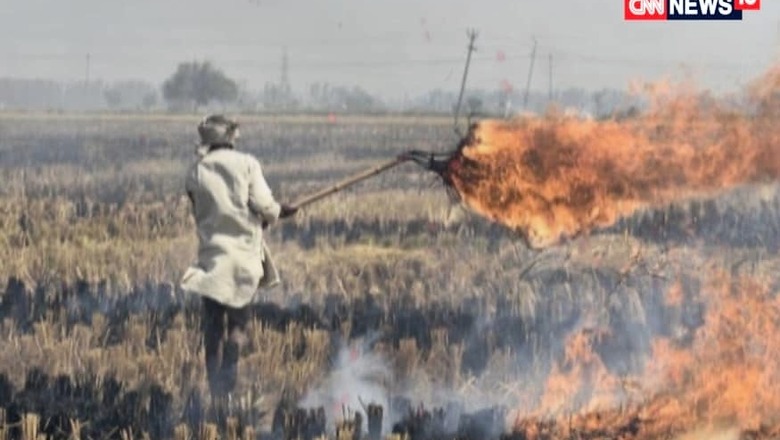
views
New Delhi: Stubble burning in Punjab and Haryana contributed to 32 per cent of Delhi's overall pollution on Saturday, according to a report by the Centre-run System of Air Quality Forecasting and Research (SAFAR).
The report, which analyses the impact of pollutant PM2.5, showed that the highest contribution since October 11 by stubble burning was seen on Friday at 36 per cent.
On Saturday, about 32 per cent of pollution by PM2.5 was caused by stubble burning by farmers in Punjab and Haryana, it said.
The report said that the stubble burning contribution to pollution will significantly reduce in the next two days.
"Only 19 per cent pollution of PM2.5 would be caused by stubble burning on Sunday. Stubble burning would contribute to 15 per cent PM2.5 per cent pollution on Monday," an official with the SAFAR said.
PM2.5 is the presence of particles in the air with a diameter of less than 2.5 micrometres, while PM10 is the presence of particles in the air with, and both are considered the major atmospheric pollutants. PM2.5, in particular, poses greater harm as its fine particles can easily be inhaled into the respiratory tract.
"On Thursday and Friday more stubble was burnt in Punjab and Haryana due to which its contribution to PM2.5 pollution increased," the official said, adding that the impact of pollution by stubble burning on the national capital could be seen only a day after the stubble is burnt.
"Pollution would reduce in the next couple of days if the weather condition remains same. The weather conditions include wind direction, temperature etc," he said.
The report also analysed the trends of different factors causing pollution since 2010 and it said transport emission in the national capital has increased significantly to 41 per cent in the last eight years.
The residential bio-fuel emission declined significantly in Delhi at 64 per cent since 2010, the report said.
Meanwhile, the SAFAR issued a health advisory due to increased pollution levels in Delhi, urging people with heart or lung disease, older adults and children to avoid prolonged or heavy exertion.
It also recommended people to go for shorter walks instead of jogs, keeping windows closed and wearing masks while stepping outside.
Delhi's air quality remained very poor for the fourth day Saturday with five areas of the national capital recording severe pollution levels.
The authorities warned that at the beginning of November the situation may get further deteriorated due to localised emissions during festival and regional contribution due to stubble burning.
The Central Pollution Control Board recorded the overall Air Quality Index (AQI) of Delhi at 350. The highest AQI of this season so far has been recorded on Friday at 361.
On Saturday, five areas recorded severe pollution levels. They include Anand Vihar, Dwarka Sector 8, Narela, Punbjabi Bagh and Rohini. Punjabi Bagh recorded the highest pollution levels in the national capital at 434.
An AQI between 0 and 50 is considered "good", 51 and 100 "satisfactory", 101 and 200 "moderate", 201 and 300 "poor", 301 and 400 "very poor", and 401 and 500 "severe".




















Comments
0 comment